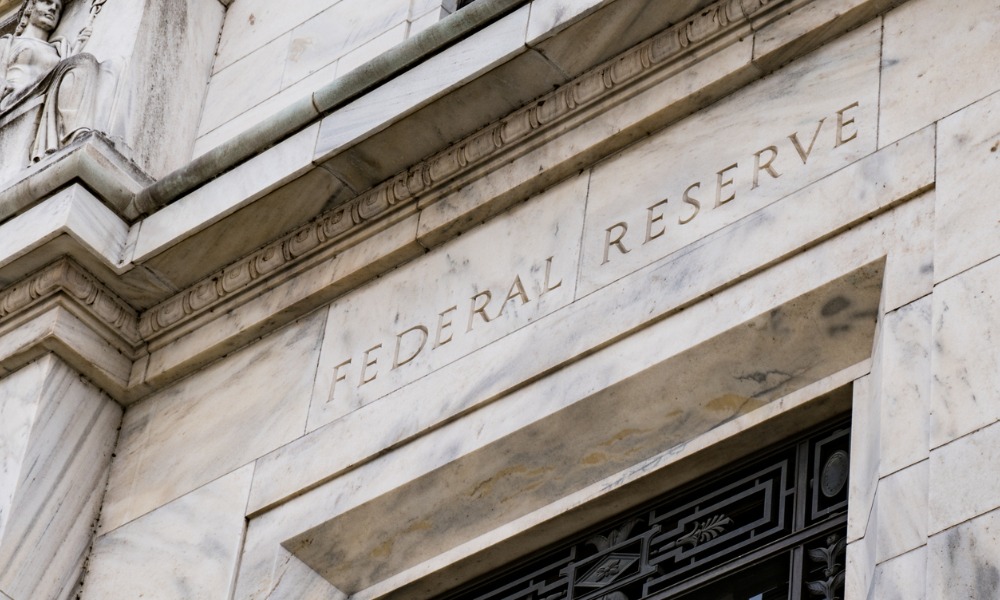Bitcoin aligns more with tech stocks as optimism about lower Fed rates boosts crypto's appeal

Bitcoin was grouped with other speculative investments during the US Federal Reserve’s last tightening cycle, declining on expectations that higher interest rates would reduce the appetite for risk.
Now, with growing optimism that borrowing costs could soon decrease, advocates of the largest cryptocurrency suggest it is more similar to high-growth assets like technology company shares.
Recently, Bitcoin has been trading in line with this view. The 90-day correlation coefficient between the digital currency and the tech-heavy Nasdaq 100 index reached 0.46 this week, the highest since late August.
A coefficient of 1 means the assets move in sync, while minus-1 indicates they move in opposite directions. After the Fed began raising its target rate in early 2022, the correlation exceeded 0.8, the highest since Bitcoin gained mainstream attention.
“People are refocused on crypto as a growth asset or an asset that represents network value,” said Joshua Lim, co-founder of trading firm Arbelos Markets. “Its ability as a technology and transfer of value mechanism means it’s going to be more correlated to other growth assets like Nasdaq, tech equities, those sorts of things.”
Bitcoin proponents have long argued the coin is an uncorrelated asset, not influenced by governments and resistant to external factors.
Introduced in 2008 by an anonymous entity known as Satoshi Nakamoto, the goal was to create a decentralized currency outside government and central bank control. Over the years, Bitcoin has been promoted as digital gold, an inflation hedge, and a store of value.
However, Bitcoin’s price volatility has challenged these narratives. The approval of US exchange-traded funds (ETFs) to hold Bitcoin directly has opened the token to a new group of investors.
“Since the beginning of 2024, you’ve seen the S&P 500 and Bitcoin quite positively correlated, which is unusual and shatters the theory of it being a store of value,” said Toby Winterflood, chief product officer of CCData.
“I believe the main reason for its current highs is the maturity of the ETFs, which are some of the fastest-growing in history.”
Bitcoin surged after the ETFs launched in January, reaching nearly US$74,000 in March before paring gains as demand cooled. The token rose about 1.4 percent on Friday to around $66,200 and is up almost 10 percent this week.
Bitcoin has jumped about 58 percent this year, compared to an 11 percent increase in the Nasdaq 100.
“Those were significant motivators for traditional allocators outside of crypto to pay attention to the asset class and start buying into it,” Lim said, referring to the US ETFs, Bitcoin reaching its all-time high in March, and its blockchain halving in April.
“Now that those catalysts are behind us, there’s more focus on just the broader macro picture.”
Data released Wednesday showed a measure of underlying US inflation decreased in April for the first time in six months, marking progress towards Fed officials' desired direction before reducing rates.
The core consumer price index, excluding food and energy costs, rose 0.3 percent from March after three months of higher-than-expected readings.
Still, several Fed officials noted Thursday that the central bank should maintain high borrowing costs longer as they await more evidence of easing inflation, indicating they are not in a rush to cut rates.
“If the Fed lowers rates, I think generally speaking, that would be bullish for risk assets,” Lim said. “And so that would also be bullish for crypto.”
While more crypto investors have refocused on the Fed, CCData found that Bitcoin has remained steady in growth and resiliency since the release of the US ETFs, Winterflood said.
“It’ll be interesting to see what happens” if the Fed cuts rates in the coming months, Winterflood said. “I wonder if Bitcoin will behave as it did previously, as a riskier asset, or if it will start to be viewed as an alternative asset by traditional markets.”



